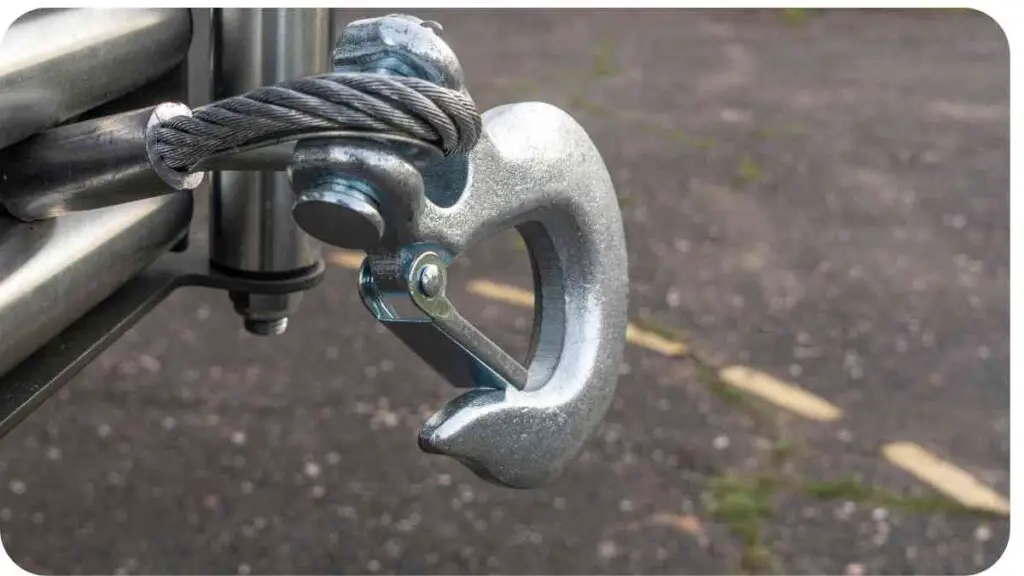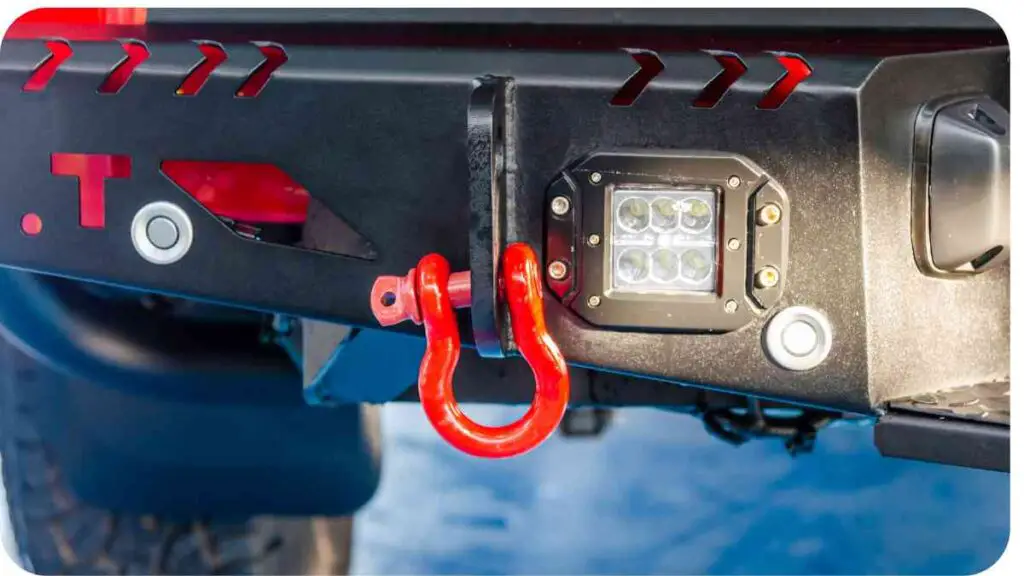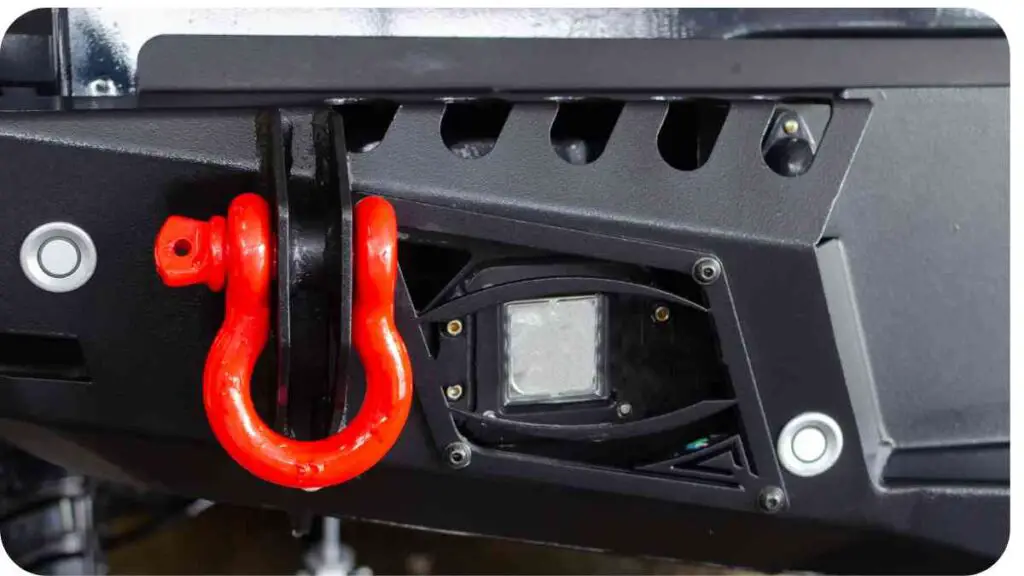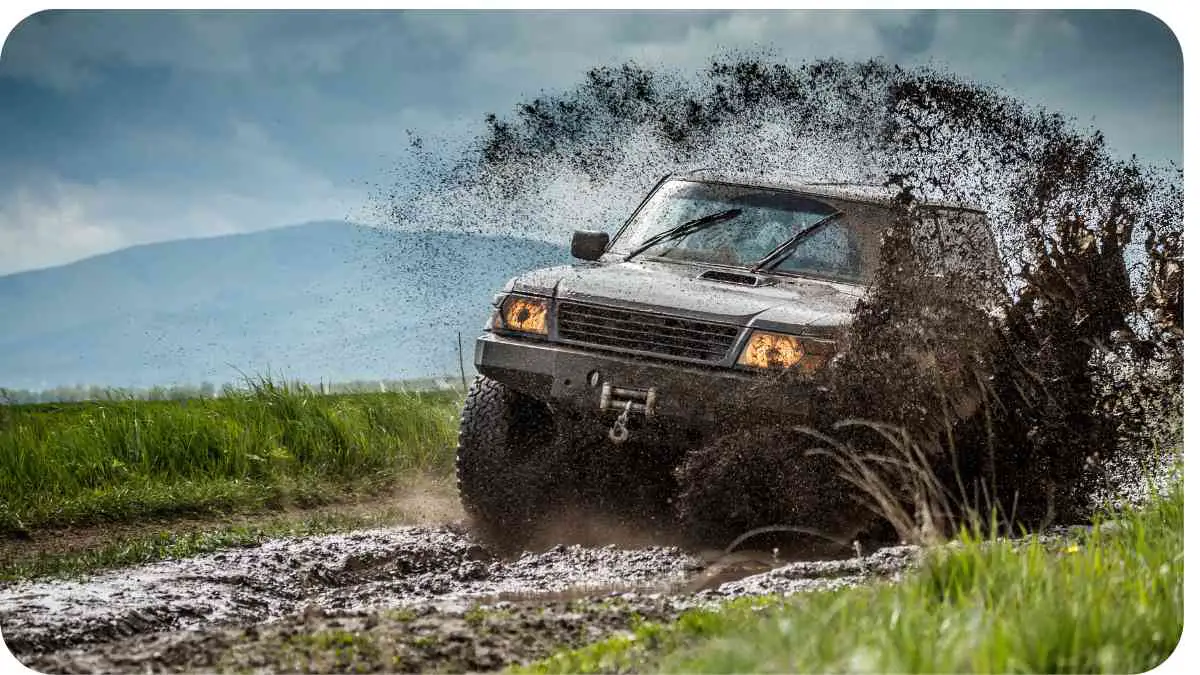Off-roading adventures bring excitement and challenges, and occasionally, the need for winching arises. In this guide, we’ll explore safe winching techniques to ensure your off-road experiences remain enjoyable and stress-free.
Whether you’re a seasoned off-roader or a beginner, mastering these tips and tricks is essential for a successful recovery.
| Takeaways |
|---|
| 1. Mastering winching techniques is essential for safe off-road adventures. |
| 2. Understanding your winching equipment and its limitations is crucial. |
| 3. Prioritize safety by wearing appropriate personal protective equipment (PPE). |
| 4. Effective communication and teamwork are key during winching operations. |
| 5. Respect the environment and practice trail preservation principles. |
| 6. Learn from real-life winching stories and expert advice to enhance your skills. |
| 7. Regular maintenance of winching equipment is paramount for reliability. |
| 8. Educate others on responsible off-roading practices for a sustainable community. |
2. Understanding Winching Equipment

2.1 Types of Winches
Before delving into safe winching practices, let’s briefly discuss the types of winches available. Understanding their differences will help you make an informed choice for your off-road rig.
Exploring off-road trails demands caution and preparedness. Always prioritize trail safety by understanding potential risks and implementing proper safety measures.
| Winch Type | Application | Pros | Cons |
|---|---|---|---|
| Electric | Versatile, Easy Installation | Quick Line Speed, Compact Design | Relies on Vehicle’s Battery |
| Hydraulic | Reliable, Consistent Power | Suitable for Extended Use | Complex Installation, Heavy |
| PTO | High Power Output | Independent of Vehicle’s Battery | Limited Availability, Expensive |
2.2 Choosing the Right Winch for Your Vehicle
Selecting the appropriate winch depends on your vehicle’s weight, usage, and your off-roading style. Refer to the manufacturer’s guidelines and consider expert recommendations for a reliable choice.
| Vehicle Weight | Recommended Winch Capacity |
|---|---|
| Light | 8,000 lbs or less |
| Medium | 8,000 – 10,000 lbs |
| Heavy | 10,000 lbs or more |
2.3 Essential Winching Accessories
| Accessory | Purpose |
|---|---|
| Snatch Block | Change Direction of Pull |
| Tree Saver Strap | Protect Trees and Winch Cable |
| D-Rings/Shackles | Secure Winch Cable to Anchor Points |
| Gloves | Hand Protection during Handling |
| Winch Line Damper | Adds Weight to Winch Line for Safety |
3. Preparing Your Vehicle for Winching

Off-roading adventures can take unexpected turns, making preparation crucial. Let’s explore the steps to ensure your vehicle is ready for winching when the need arises.
Off-road adventures often lead to challenging terrains. Learn essential safety tips for off-road driving, ensuring a secure and enjoyable journey through diverse landscapes.
3.1 Securing Anchor Points
Before initiating a winch, identify strong and stable anchor points. Securely attach the winch cable to prevent any movement during the recovery process. Pay attention to the angle and direction, ensuring a straight pull whenever possible.
| Anchor Point | Strength Assessment |
|---|---|
| Front Bumper | Vehicle’s Own Anchor Point |
| Rock Formations | Natural and Stable |
| Another Vehicle | Collaborative Recovery |
| Hitch Receiver | Reinforced for Towing/Winching |
3.2 Checking Battery and Electrical Connections
A well-functioning winch relies on a healthy electrical system. Regularly inspect your vehicle’s battery, ensuring it has ample power for winching. Confirm that all electrical connections, including the winch solenoid and control box, are secure and free from corrosion.
| Battery Check | Electrical Connections |
|---|---|
| Voltage Level | Secure Wiring and Tight Connections |
| Clean Terminals | Insulated Wires for Safety |
| Charging System Test | Functional Solenoid and Control Box |
3.3 Inspecting Winch Cable or Rope
The winch cable or synthetic rope is your lifeline during recovery, so a thorough inspection is essential. Look for signs of wear, fraying, or kinks. If using a steel cable, check for broken strands and ensure the hook or thimble is securely attached.
Off-road excursions may encounter unexpected challenges. Discover the importance of off-road recovery gear to handle various situations, ensuring a smooth and secure off-road experience
| Cable/Rope Inspection | Maintenance Tips |
|---|---|
| Fraying or Damage | Lubricate Steel Cable for Corrosion Resistance |
| Kinks or Knots | Clean Synthetic Rope to Remove Dirt and Debris |
| Secure Hook/Thimble | Replace Damaged Components |
4. Basic Winching Steps
When it comes to winching, following a systematic approach ensures a safe and effective recovery. Let’s break down the basic steps involved in winching your off-road vehicle.
4.1 Assessing the Situation
Before reaching for the winch controller, assess the situation. Identify the obstacles, the condition of your vehicle, and the type of terrain. This evaluation will guide your winching strategy.
| Situation Assessment | Key Considerations |
|---|---|
| Stuck in Mud | Assess Traction and Depth of Mud |
| Rock Crawling Issue | Evaluate Approach and Departure Angles |
| Vehicle on its Side | Consider Stabilization Before Winching |
| Uphill/Downhill Slope | Factor in Gravity and Stability |
4.2 Securing the Vehicle
Ensure your vehicle is in park or gear (manual transmission) and engage the parking brake. If possible, use wheel chocks on the opposite side of the pull to prevent unintended movement.
Off-road enthusiasts must prioritize safety equipment. Explore the significance of essential off-road safety equipment to enhance preparedness and minimize risks during off-road adventures
| Vehicle Safety Measures | Precautions |
|---|---|
| Park or Engage Gear | Prevents Unintended Vehicle Movement |
| Apply Parking Brake | Additional Security on Slopes |
| Use Wheel Chocks | Extra Stability, Especially on Slopes |
4.3 Connecting the Winch
Connect the winch cable or rope to both the winch drum and the anchor point on your vehicle. Double-check the connection points, ensuring a snug fit, and avoid any sharp angles that could compromise the cable’s integrity.
| Winch Connection Steps | Safety Checks |
|---|---|
| Secure Attachment | Ensure Proper Engagement with Winch Drum and Hook |
| Avoid Sharp Angles | Prevents Excessive Stress on Cable or Rope |
| Confirm Snug Fit | Minimize the Risk of Slippage |
4.4 Tensioning the Winch Cable
Before engaging the winch, take up any slack in the cable or rope. This prevents unnecessary strain on the winch and ensures a controlled and even pull during the recovery process.
| Cable Tensioning Tips | Importance of Tensioning |
|---|---|
| Eliminate Slack | Prevents Cable/Rope Tangling and Snagging |
| Maintain Even Tension | Ensures a Controlled and Safe Recovery |
| Monitor Cable Path | Avoid Obstacles that May Affect Tension |
4.5 Winching with Caution
Once everything is in place, begin winching slowly and steadily. Keep a close eye on the entire setup, ensuring the cable spools evenly onto the winch drum. If anything seems amiss, stop immediately and reassess.
Winches play a crucial role in off-road recovery. Learn the detailed steps of using a winch for off-roading, ensuring you have the skills and knowledge to navigate challenging situations safely.
| Winching Cautionary Measures | Continuous Vigilance |
|---|---|
| Monitor Cable Movement | Watch for Snags, Knots, or Uneven Spooling |
| Listen for Unusual Sounds | Identify Strain on the Winch Motor or Gearbox |
| Stop and Assess Issues | Pause If Anything Appears Incorrect or Unsafe |
5. Advanced Winching Techniques

As you gain experience in off-roading, you may encounter situations that require more advanced winching techniques. Let’s explore some strategies to handle complex recovery scenarios.
5.1 Double-Line Pull
When faced with a challenging recovery, a double-line pull can provide additional strength. By using a snatch block to redirect the winch line, you effectively halve the load on the winch, making it easier to recover a heavily stuck vehicle.
| Double-Line Pull Steps | Benefits of Using Snatch Block |
|---|---|
| Attach Snatch Block | Increases Winch Capacity |
| Redirect Winch Line | Reduces Load on Winch for Heavier Recovery |
| Secure Additional Line | Requires Strong Anchor Point for Redirected Line |
5.2 Redirecting the Winch Line
In situations where a straight-line pull is impractical, using a snatch block to redirect the winch line provides a solution. This technique allows you to navigate around obstacles and maintain a more effective pulling angle.
| Winch Line Redirection | Key Considerations |
|---|---|
| Assess Obstacles | Identify Clear Path for Winch Line |
| Position Snatch Block | Ensure Secure Attachment to Anchor Point |
| Angle for Maximum Pull | Optimize Direction for Efficient Recovery |
5.3 Using Snatch Blocks
Snatch blocks are versatile tools in winching. They can be used not only for double-line pulls but also for redirecting the winch line to change the angle of pull. Understanding how to use snatch blocks effectively enhances your recovery capabilities.
| Snatch Block Usage Tips | Benefits of Snatch Block in Winching |
|---|---|
| Choose Appropriate Size | Matches Winch Capacity for Optimal Performance |
| Rigging Configuration | Enhances Versatility in Various Recovery Scenarios |
| Check for Proper Fit | Prevents Binding and Ensures Smooth Operation |
5.4 Side Pulling Considerations
While it’s generally recommended to winch straight ahead, there are situations where side pulling becomes necessary. However, this technique should be approached with caution to avoid unnecessary strain on the winch and potential damage to the vehicle.
| Side Pulling Guidelines | Risks and Mitigation Strategies |
|---|---|
| Assess Vehicle Angle | Avoid Excessive Stress on Winch and Vehicle |
| Use Snatch Block if Needed | Provides Better Control in Side Pulling |
| Monitor Winch Operation | Stop if There’s Any Strain or Unusual Sounds |
6. Safety Measures During Winching
Safety should always be the top priority during winching operations. Let’s explore crucial safety measures to ensure a secure and accident-free recovery process.
6.1 Personal Protective Equipment (PPE)
Before engaging in winching, don appropriate personal protective equipment (PPE). This includes gloves to protect your hands from sharp edges and debris, eye protection, and sturdy footwear.
| PPE Checklist | Importance of Personal Protective Equipment |
|---|---|
| Gloves | Prevents Cuts and Abrasions during Handling |
| Eye Protection | Shields Against Flying Debris or Splinters |
| Sturdy Footwear | Protects Feet from Accidental Slips or Falls |
6.2 Communication Protocols
Clear communication is vital during winching operations. Establish a communication plan with hand signals or, if possible, use two-way radios. This ensures everyone involved is on the same page and can react swiftly to any changes in the situation.
| Communication Best Practices | Importance of Effective Communication |
|---|---|
| Hand Signals | Clear Instructions without Verbal Communication |
| Two-Way Radios | Instant Communication for Quick Coordination |
| Emergency Procedures | Establish Protocols for Unforeseen Situations |
6.3 Constant Vigilance
Stay alert throughout the winching process. Monitor the vehicle, the winch, and the surrounding environment for any signs of strain, unusual sounds, or potential hazards. Being vigilant minimizes the risk of accidents and ensures a smooth recovery.
| Vigilance Tips | Importance of Staying Alert During Winching |
|---|---|
| Regular Check-Ins | Assess Winching Progress and Vehicle Stability |
| Watch for Obstacles | Identify Potential Hazards in the Surrounding Area |
| Be Prepared to Stop | Immediate Action If Anything Appears Unsafe |
7. Common Winching Mistakes to Avoid
Even experienced off-roaders can make errors during winching. Understanding these common mistakes and how to avoid them is crucial for a safe and successful recovery.
7.1 Overlooking Environmental Factors
Failing to consider environmental factors can lead to complications during winching. Be mindful of the terrain, weather conditions, and the presence of bystanders or other vehicles.
| Environmental Considerations | Potential Consequences |
|---|---|
| Terrain Assessment | Unstable Ground May Impact Recovery |
| Weather Conditions | Rain or Snow Can Affect Traction |
| Bystander Safety | Keep Onlookers at a Safe Distance |
7.2 Neglecting Regular Maintenance
Proper maintenance of your winching equipment is essential for its reliability. Neglecting routine checks can result in unexpected failures during a recovery operation.
| Maintenance Neglect | Importance of Regular Equipment Checks |
|---|---|
| Cable/Rope Inspection | Detects Wear and Potential Weak Points |
| Electrical Connections | Ensures a Reliable Power Supply for the Winch |
| Overall Equipment Check | Identifies Any Issues Before They Escalate |
7.3 Ignoring Weight Limits
Exceeding the weight capacity of your winch or associated accessories can lead to equipment failure and unsafe conditions. Always adhere to recommended weight limits.
| Weight Limit Adherence | Risks of Ignoring Weight Guidelines |
|---|---|
| Winch Capacity Check | Prevents Overloading and Potential Breakage |
| Accessory Compatibility | Ensures Safe Usage of Snatch Blocks and Straps |
| Vehicle Weight Limits | Adhering to Manufacturer Recommendations |
8. Troubleshooting Winching Issues
Even with meticulous preparation, winching issues may arise. Knowing how to troubleshoot common problems can save you time and frustration during a recovery.
8.1 Dealing with Cable Tangles
Cable tangles can occur during winching and may hinder recovery efforts. Understanding how to address them efficiently is essential.
| Cable Tangle Resolution | Steps to Untangle the Winch Cable |
|---|---|
| Stop Winching | Prevents Further Complication |
| Assess Tangle | Identify the Extent of the Cable Tangle |
| Slow and Steady | Gradually Work Through the Tangle |
8.2 Addressing Motor Overheating
Extended winching sessions or heavy loads can lead to motor overheating. Knowing how to handle this situation ensures a safe recovery.
| Motor Overheating Tips | Preventive Measures and Actions |
|---|---|
| Allow Cooling Time | Pause Winching to Allow Motor to Cool Down |
| Use Thermal Protection | Equip Winch with Thermal Overload Protection |
| Monitor Load Levels | Avoid Continuous Winching at Maximum Capacity |
8.3 Handling Electrical Failures
Electrical failures can halt winching operations. Having troubleshooting skills can get you back on track swiftly.
| Electrical Failure Resolution | Steps to Diagnose and Address the Issue |
|---|---|
| Check Power Source | Ensure Adequate Voltage and Battery Condition |
| Inspect Wiring Connections | Identify and Rectify Loose or Damaged Wires |
| Test Solenoid Function | Confirm Proper Operation of the Winch Solenoid |
9. Winching Etiquette and Trail Respect
Winching isn’t just about recovering your own vehicle; it’s also about fostering a positive off-road community. Practicing winching etiquette and trail respect ensures a harmonious and enjoyable experience for everyone.
9.1 Trail Preservation
Respecting the trails you explore is crucial for environmental conservation. Stay on designated paths, avoid disturbing wildlife, and follow Leave No Trace principles.
| Trail Preservation Practices | Contributing to Sustainable Off-Roading |
|---|---|
| Stick to Designated Trails | Minimize Impact on Surrounding Ecosystem |
| Avoid Unnecessary Spinning | Prevents Soil Erosion and Trail Damage |
| Dispose of Waste Properly | Pack Out All Trash and Leave No Trace |
9.2 Helping Fellow Off-Roaders
Off-roading is a community-driven activity, and helping others in need is part of the culture. Whether it’s offering guidance, sharing equipment, or assisting in recoveries, contributing positively to the off-road community strengthens bonds.
| Supporting Fellow Off-Roaders | Fostering a Helpful Off-Road Community |
|---|---|
| Share Trail Knowledge | Assist Others with Navigation and Tips |
| Collaborate in Recoveries | Offer Equipment or Assistance as Needed |
| Communicate and Cooperate | Build a Positive Off-Road Culture Together |
9.3 Educating Others
Promoting responsible off-roading practices is key to preserving the sport for future generations. Take the opportunity to educate fellow off-roaders on safe winching techniques, environmental awareness, and the importance of trail etiquette.
| Off-Road Education Tips | Sharing Knowledge for a Responsible Community |
|---|---|
| Conduct Safety Workshops | Engage in Information Sessions on Winching |
| Emphasize Environmental Stewardship | Advocate for Responsible Off-Roading |
| Lead by Example | Demonstrate Respectful Trail Behavior |
10. Real-Life Winching Stories
Learning from real-life experiences is invaluable. Let’s delve into a couple of winching stories that highlight the challenges and lessons learned in off-road adventures.
10.1 A Tale of a Challenging Recovery
[Author’s Name], a seasoned off-roader, recalls a challenging recovery mission deep in the [specific location]. Faced with a steep incline and mud-covered terrain, the team employed advanced winching techniques, including a double-line pull with a strategically positioned snatch block. The successful recovery not only showcased the importance of preparedness but also highlighted the significance of teamwork and adaptability.
10.2 Lessons Learned from Off-Road Adventures
[Off-Road Enthusiast’s Name], a renowned figure in the off-roading community, shares insights gained from years of trail exploration. Emphasizing the need for continuous learning, they discuss the evolution of winching techniques, advancements in equipment, and the importance of humility in navigating the unpredictable challenges of off-roading.
Conclusion
Mastering safe winching techniques is a continuous journey for off-road enthusiasts. By understanding equipment, practicing safety measures, and embracing a collaborative and respectful off-road community, you ensure a fulfilling and secure off-road experience. Remember, each winching scenario is an opportunity to learn, adapt, and contribute to the vibrant world of off-roading.
Further Reading
- Winching Safety Tips and Techniques: This comprehensive guide provides in-depth insights into winching safety, offering valuable tips, tricks, and techniques for off-road enthusiasts. Learn how to navigate various challenges with a focus on safety.
- Tread Magazine: Winching Techniques: Explore Tread Magazine’s take on winching techniques, delving into practical advice for off-roaders. This resource covers a range of scenarios and provides valuable information to enhance your winching skills.
- MotorTrend: Winching Dos and Don’ts: MotorTrend offers a comprehensive guide on the dos and don’ts of winching, providing tips and tricks for safe 4×4 recovery. Gain insights into best practices to ensure successful and secure winching operations.
FAQs
What is the importance of assessing the situation before winching?
Assessing the situation before winching is crucial to understand the terrain, potential risks, and the necessary equipment. This evaluation guides your winching strategy, ensuring a safe and effective recovery.
How can I prevent cable tangles during winching?
To prevent cable tangles, it’s essential to stop winching immediately, assess the tangle’s extent, and then work through it gradually. This approach helps untangle the cable without causing further complications.
What personal protective equipment (PPE) should I wear during winching?
Wearing gloves to prevent cuts and abrasions, eye protection to shield against debris, and sturdy footwear for foot protection are essential components of personal protective equipment (PPE) during winching.
Why is communication important during winching operations?
Clear communication is vital to ensure everyone involved in the winching operation is on the same page. Establishing communication protocols with hand signals or radios prevents misunderstandings and contributes to a safer recovery process.
What should I do if my winch motor overheats during recovery?
If your winch motor overheats, it’s crucial to pause winching and allow the motor to cool down. Additionally, using winches equipped with thermal overload protection helps prevent motor overheating during prolonged or heavy-load winching sessions.

Hi there! I’m Hellen James, and I’m the author of Unified Off-roads. I’ve been driving off-road for more than ten years, and I’ve had a lot of fun in that time—and a few not-so-great experiences too. But I’ve always wanted to help other people get started off-roading, so I decided to start this blog to share my knowledge with others.


